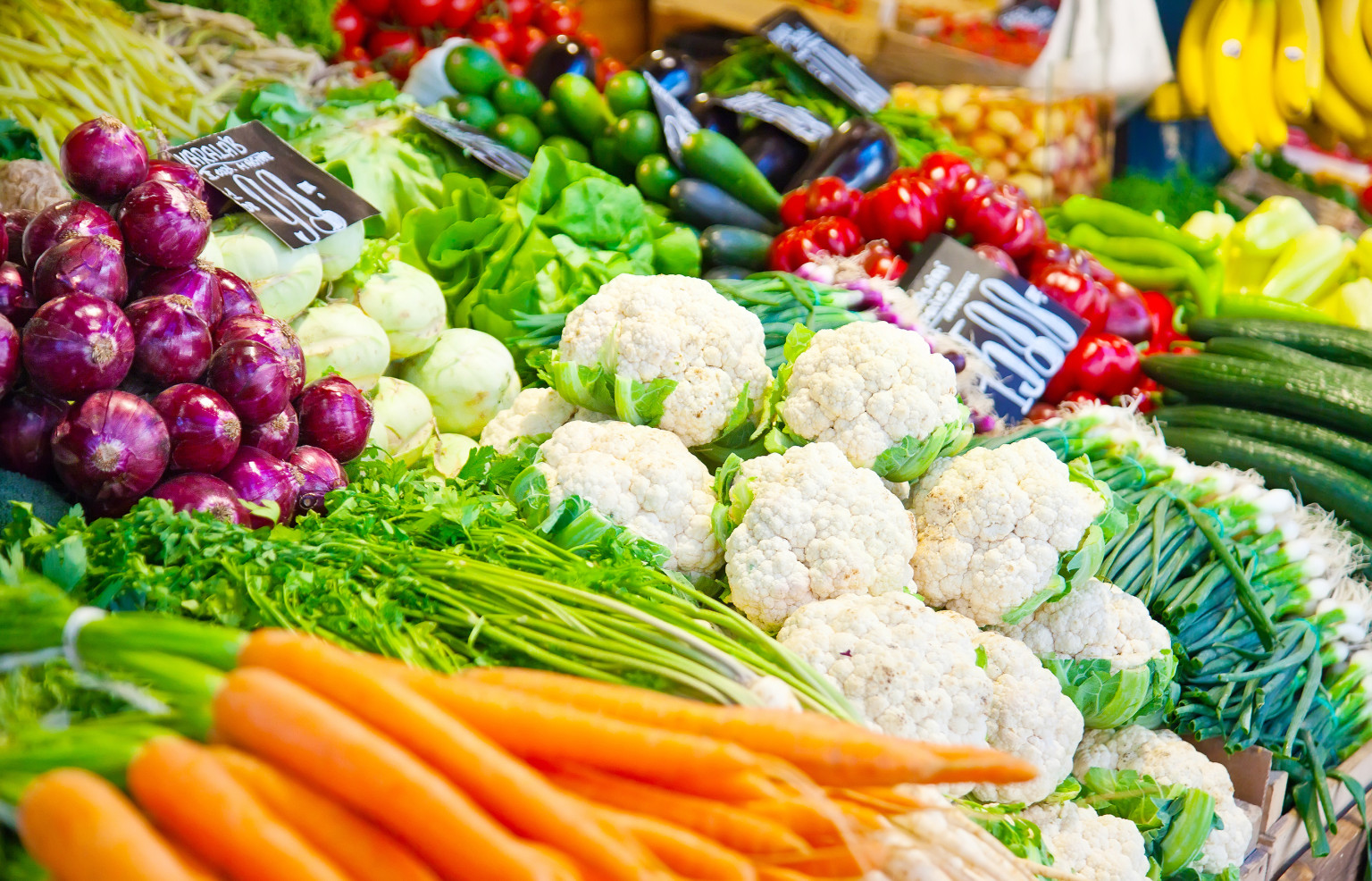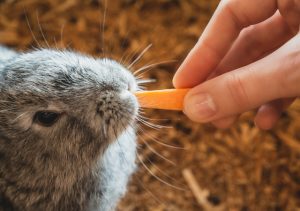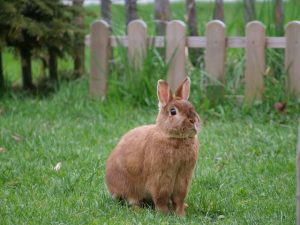Contents
- What to consider when you're choosing the best greens for rabbits?
- What's Low and High in oxalic acid
- Why do we really need to feed rabbits veggies?
- When your rabbit doesn't tolerate veggies. What should you do?
- Understanding why cruciferous and starchy vegetables are not good for your bunny
- What's Low and High in Calcium content?
- High in Vitamin A:
- The rest of the rabbit vegetables, also good for your bun:
- VEGETABLES TO AVOID
What to consider when you're choosing the best greens for rabbits?
So many choices to feed our rabbits when it comes to fresh food. There will always be a lot of questions and some uncertainty regarding the vegetables we can or cannot feed our house rabbit.
The oldest domestic rabbit, that lived for 17 years and 2 weeks, ate only a simple diet (a really healthy food for rabbits) made of hay, a few pellets, and water. No treats, no fruits or even veggies. The right vegetables are not bad for your rabbit. You could follow this strict diet, too, but discuss it with your vet. Check out how to make your rabbit live longer if you are interested on the subject.
In this article, you will understand why veggies are good and what are the key aspects of pet rabbit nutrition (vegetable section). What to look out for when buying veggies for rabbits:
- levels of oxalates;
- calcium content;
- vitamin A;
- sugar;
- starch.
What's Low and High in oxalic acid
Oxalic acid is a poison that is naturally produced by some plants as a defense mechanism. A few of the leafy greens have relatively high levels of oxalic acid. Understanding the adequate amounts that should be fed to your rabbits is key (only one per day and avoid sticking to one kind, best to rotate). Here is the list:
- parsley;
- mustard greens;
- spinach;
- radish tops;
- Beet greens;
- Swiss chard;
- sprouts.
Kale - there is currently dispute within the scientific community regarding the levels of oxalates in kale. Therefore are a lot of factors to consider. Feed kale combined with other veggies or don't feed it at all. We encourage you to make your own decisions. All rabbits are different and it seems that they react differently to kale.
Most of the fresh vegetables we feed rabbits have a low level of oxalic acid (fine to feed every day):
Arugula (in the US), rocket (in the UK) very good for rabbits;
Basil;
Bok Choy/Pak Choy;
Carrot tops;
Chicory
Cilantro/Coriander
Endive;
Watercress;
Wheat Grass;
Green leaf - Lettuce;
Red leaf - Lettuce;
Romaine - Lettuce;
Frisee Lettuce;
Dandelion greens and flowers (no pesticides);
Dill;
Escarole;
Fennel;
Mint Varieties;
Radicchio;
Raspberry leaves.
Why do we really need to feed rabbits veggies?
Even though grass hay (any variety) is the number one thing when it comes to pet rabbit food (80%) we still need to feed fresh foods (10 - 15%) and pellets (10%). Here are the advantages of feeding greens:
1. Provide moisture in the diet, which is good for kidney and bladder function;
2. Variety in taste, texture and general nutrition (try rotating the greens);
3. Increase your rabbits’ fluid intake by serving them very wet (reduces their chances of developing bladder stones).
Although vegetables are very good for your pet rabbit, the share of vegetables offered daily should be restricted to assure the rabbit eats his portion of hay.
The majority of fresh food include:
1. leafy fresh food (about 75% of the fresh part of the diet);
2. non-leafy fresh food (25% of the fresh part of the diet: 15% non-leafy vegetables and 10% good fruits).
The quantity should be twice the size of the rabbit’s head, if you were to chop the vegetables coarsely and gather them snuggly (but not squeezed tightly) into your hands.
Check out these resoures to learn more about the right quantities for vegetables and to see what fruits are suitable for rabbits.
When your rabbit doesn't tolerate veggies. What should you do?
If your pet rabbit doesn't tolerate fresh foods don't worry. Hay is rich in vitamin A and D as well as calcium, protein, and other nutrients, so it is useless to be concerned about the specific vitamins of the greens. Also, you will always have pellets!
For baby rabbits, a good time to introduce vegetables is when your little rabbit is about two months old. Before introducing any type of fresh food to your rabbit, he should eat some grass hay (as opposed to alfalfa hay) for at least two weeks.
When introducing new foods to your rabbit go slowly and allow his body the chance to adjust. You will know within 12 hours if your rabbit doesn’t tolerate a particular veggie. If it isn’t well tolerated (producing runny stools) withdraw it and try with something else after everything has settled back to normal. Wait around 6 days before making new trials.
Don’t chop his vegetables too much. Rabbits prefer whole pieces, though, celery needs to be cut into small pieces to limit choking on strings. Wash them thoroughly and be sure they have no pesticides!
Understanding why cruciferous and starchy vegetables are not good for your bunny
Be careful when feeding vegetables in the cabbage family (cruciferous vegetables): Cabbage, Broccoli (plus its leaves, including purple sprouting varieties), Cauliflower (and the leaves), Brussels (leaves and sprouts), Collard Greens, Garden Cress. For some rabbits, they can cause painful gas.
Plus many of these are high in calcium, therefore, it may cause bladder sludge or kidney stones. Turnip Greens and Kale are also high in Calcium. But, they are not bad vegetables. You can rotate your offerings and give breaks between high calcium greens.
Some vegetables and all fruits are high in starches or sugars – including carrots! Sugar and starch can change the sensitive gut flora in a rabbit’s stomach or the pH of the cecum and eventually can throw the whole digestive system off.
Here you can find out more about stachy food and why is not good for your rabbit.
What's Low and High in Calcium content?
Scientifically, there is no cause and effect between dietary calcium and an excess amount of calcium in the urine. Still, veterinarians often wisely advise pet owners to feed more of the veggies that are lower in Calcium. However, they also say that you should not avoid the other ones either.
Here are the lower in Calcium Veggies:
Sweet Peppers
Alfalfa sprouts
Coriander (cilantro)
Swiss Chard
Romaine Lettuce
Endive
Asparagus
Cauliflower
Purslane
Radishes
Carrots
Arugula
Cabbage
Turnips
Watercress
Broccoli
Celery
Beet greens
Spinach
Mustard greens (58 mg per 1 cup of serving)
Higher in calcium content are:
Parsley (78 mg per 1 cup of serving)
Kale (94 mg per 1 cup of serving)
Dandelion greens (103 mg per 1 cup of serving)
Turnip greens (105 mg per 1 cup of serving)
Chicory greens (180 mg per 1 cup of serving)
Collards (218 mg per 1 cup of serving)
Mustard spinach (315 mg per 1 cup of serving)
High in Vitamin A:
Bell Pepper, Sweet Green;
Bell Pepper, Sweet Red;
Collards;
Dandelion greens;
Endive;
Kale;
Green leaf - Lettuce;
Red leaf - Lettuce;
Romaine - Lettuce;
Peas, snow (no dried or sweet peas);
Watercress;
Wheat Grass.
The rest of the rabbit vegetables, also good for your bun:
Artichoke (leaves only - artichokes have a lot of phosphorus and are very acidic);
Alfalfa radish, and clover sprouts;
Anise Hyssop;
Asparagus;
Borage;
Calendula;
Carrot roots (limited amount, due to high sugar content - maximum 1 tbsp daily);
Catnip/catmint;
Celery;
Chamomile;
Clover;
Comfrey;
Cucumber peels;
Daylily flowers;
Dianthus;
Eggplant (purple fruit only; leaves are toxic);
English Daisy;
Grass (should be chemical free; use scissors, not lawnmower - the cutting action of the mower crushes the grass, which causes it to begin to fermenting, and could upset your rabbit's stomach);
Honeysuckle;
Jasmine;
Jerusalem Artichoke;
Kohlrabi;
Lemon balm;
Lemongrass;
Lilac;
Lovage;
Marigold;
Marjoram;
Nasturtium;
Okra;
Oregano;
Pansy;
Parsnip;
Purslane;
Rose;
Rosemary;
Sage/Salvia;
Squash fruit and flowers;
Sweet Woodruff;
French Tarragon;
Thyme;
Viola;
Violet;
Willow.
* Root vegetables differ in concentration and balance between sugars, starches, and other types of carbohydrate (so have them with moderation)
* Vegetables such as eggplants, potatoes, and tomato plant leaves are toxic to rabbits and should not be feed to them under any circumstances.
VEGETABLES TO AVOID
Avocado;
Bamboo shoots;
Beans, dried;
Beans, raw: lima, kidney, soy;
Bracken Fern;
Cassava;
Coffee beans and plant;
Whole corn kernels (can get stuck in intestines);
Grains;
Lettuce, Iceberg;
Millet;
Nuts;
Onions;
Peas, dried;
Potatoes, including peels;
Rhubarb;
Sweet peas;
Sweet Potatoes;
Tea leaves;
Whole seeds.
What veggies can rabbits eat? As we saw picking up the best greens for rabbits is not that hard.
Hence begin with only a little portion, keep your veggies fresh, wash them thoroughly, avoid pesticides and everything should work just fine for your rabbit.






